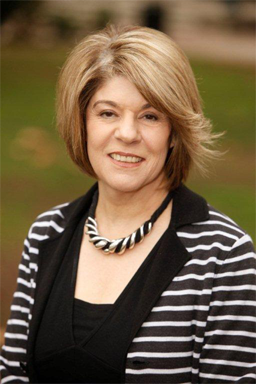Bensimon: Change from within needed to better serve ethnic minorities
Although student populations at higher education institutions may be diverse, equity does not always exist on campuses.
To rectify the situation, institutions must direct more of their focus toward accountability and organizational change, Estela Bensimon, Ed.D., co-director of the Center for Urban Education at the University of Southern California, told a group of about 100 CU faculty and staff members at a student retention symposium Friday at Norlin Library on the Boulder campus. The event was sponsored by the Faculty Council’s Ethnic and Minority Affairs Committee (EMAC).
Bensimon said higher education institutions tend to focus on compensatory strategies and ask minority students to adapt to campuses. Instead, she said, the Center for Urban Education (CUE) is dedicated to the opposite -- helping campuses find ways to adapt to students.
Education administrators say “we are as diverse as the United Nations,” Bensimon told the audience at the “Building Organizational Competence to Achieve Equity in Access, Retention, and Graduation” event. While diversity may exist, there is a disparity in who graduates, she said. “Equity is parity in education outcomes,” including retention and persistence through critical academic milestones, transfers from two-year to four-year institutions, participation in honors or other competitive programs, and a degree.
CUE develops tools to help institutions work toward equity and enable students who might otherwise fall through the cracks to receive the support they need. One of the tools CUE has developed is a scorecard that uses a five-part process to help guide an examination of institutional protocols and the development of strategies and goals to address equity issues.
Bensimon said society tends to attribute equity problems to the students themselves, their culture or their parents. But the center focuses instead on changing the infrastructures of an institution. One simple example is to change the way syllabi are constructed, Bensimon said. Rather than enumerating the ways in which students might fail the class, a syllabus should focus on ways in which students can succeed. Professors, advisers and others should also take a more proactive approach to enabling students – especially those who might be shy or embarrassed to seek out help – to use available campus resources, such as free tutoring.
Another way to promote equity is to examine student data and determine patterns that may point out problems. At 13 institutions that CUE studied, admission rates were lower for Hispanics and African-Americans than for whites. Data showed that students met admission standards; the problem was incomplete applications, either because a transcript wasn’t provided or an application fee wasn’t paid.
Bensimon said institutions must learn to reframe hunches about why non-minority students perform better than their counterparts. She said people might say, for example, that Latino students spend more hours working and that contributes to poor academic performance. Institutions should turn this idea around to benefit the student: Latinos may spend more time working; therefore tutoring and other university services should be available at hours that accommodate working students.
For more information about CUE, visit http://cue.usc.edu/


